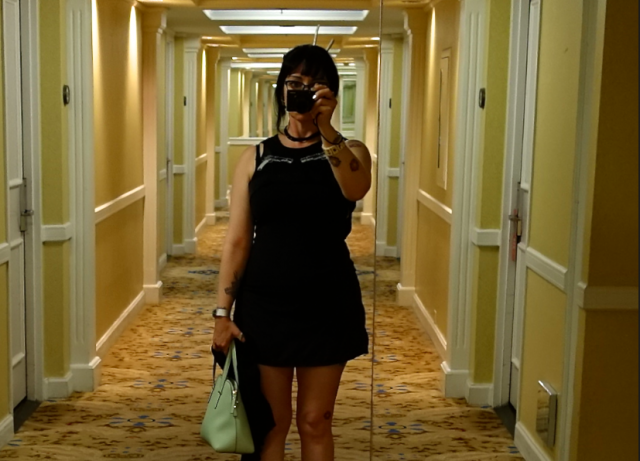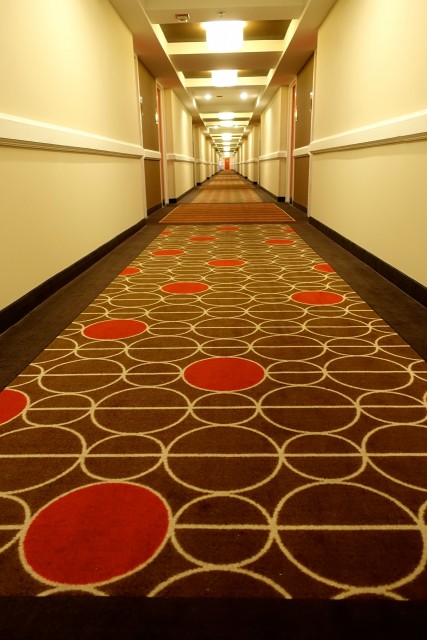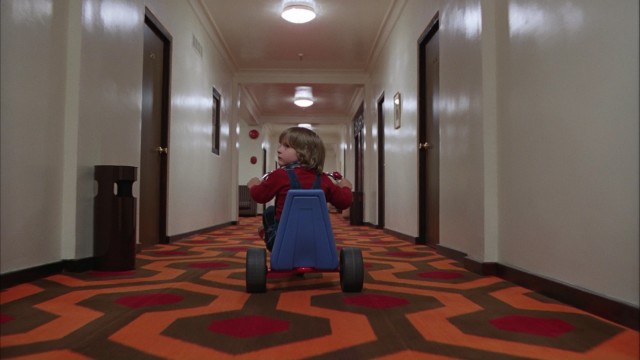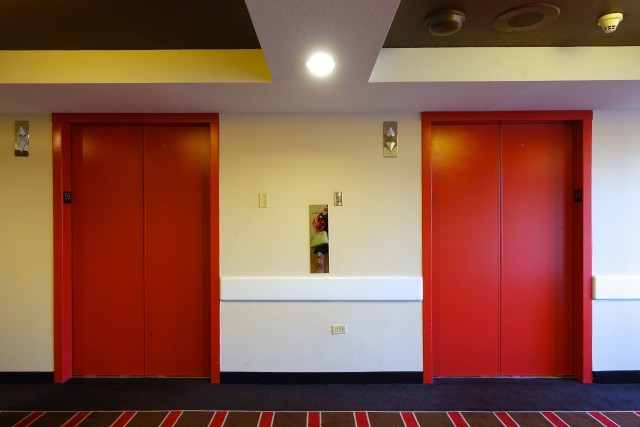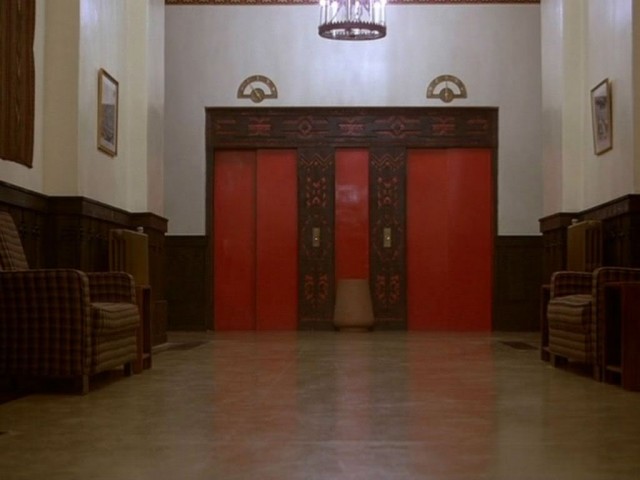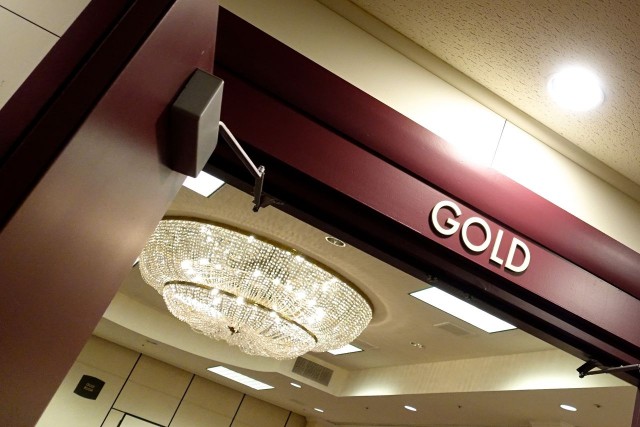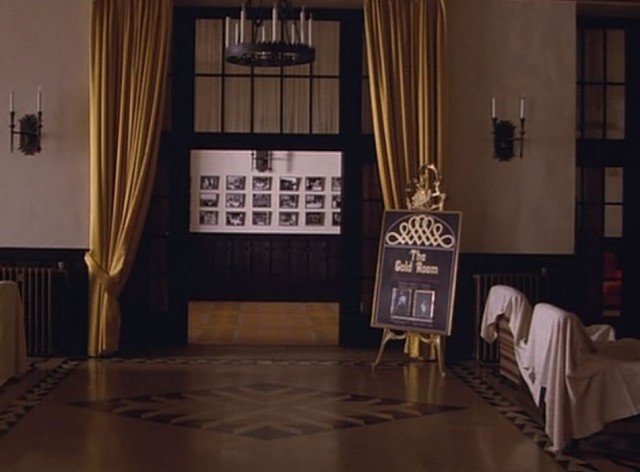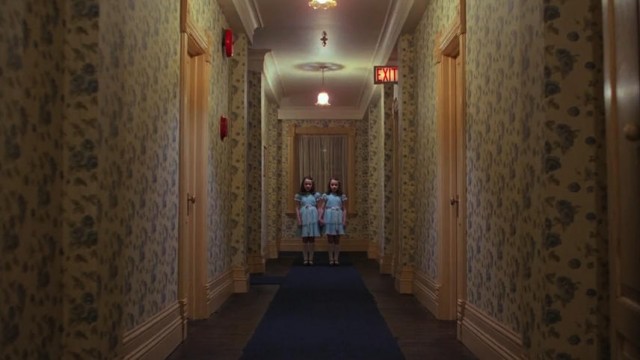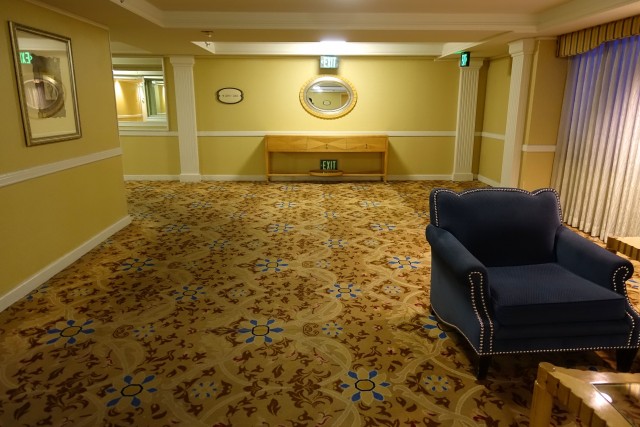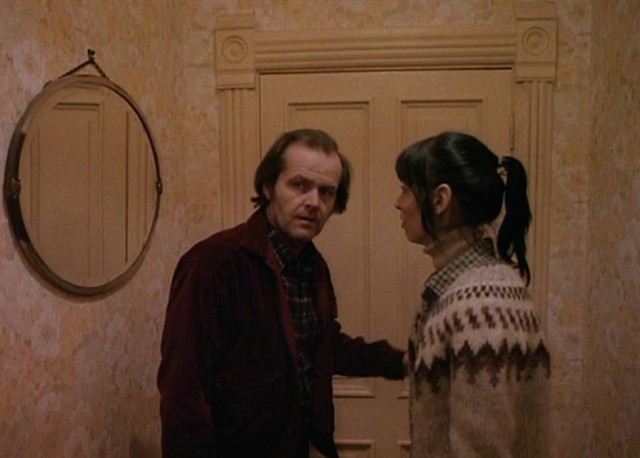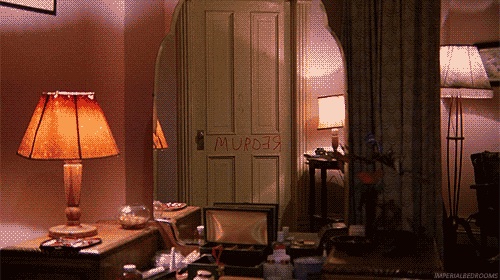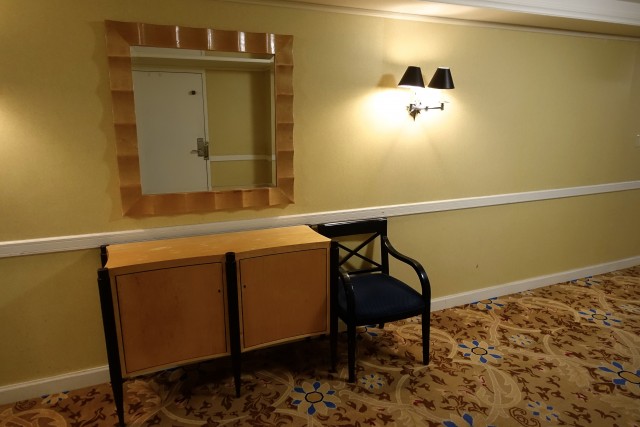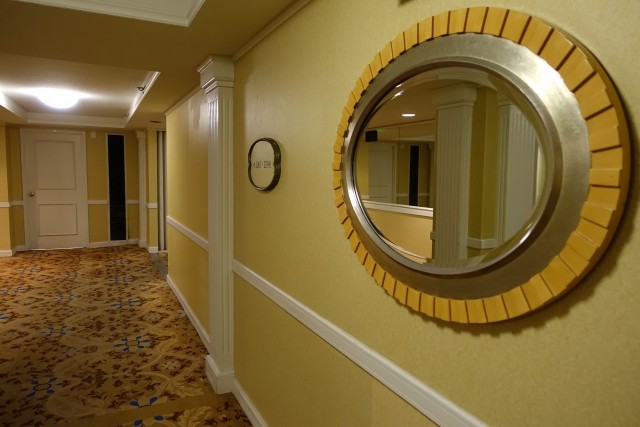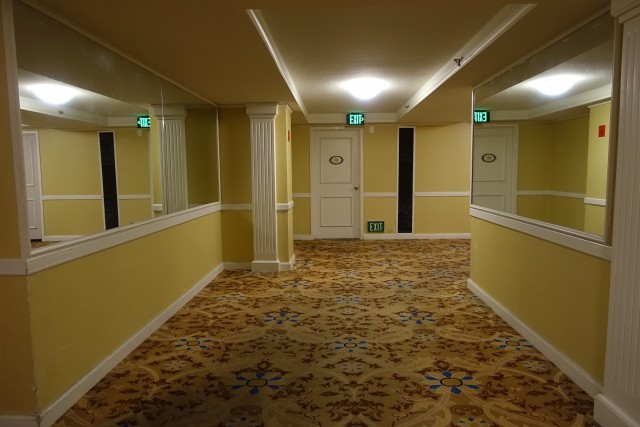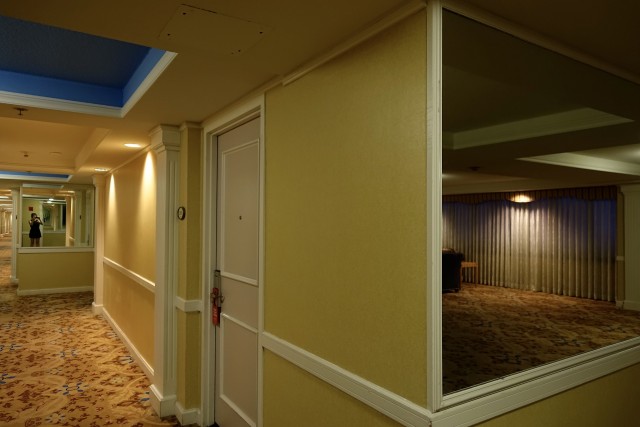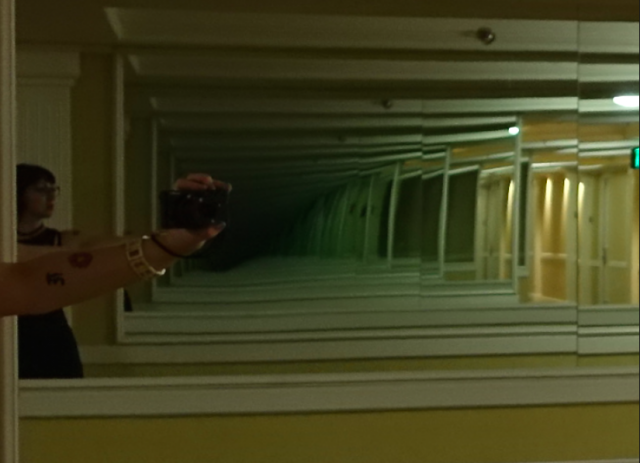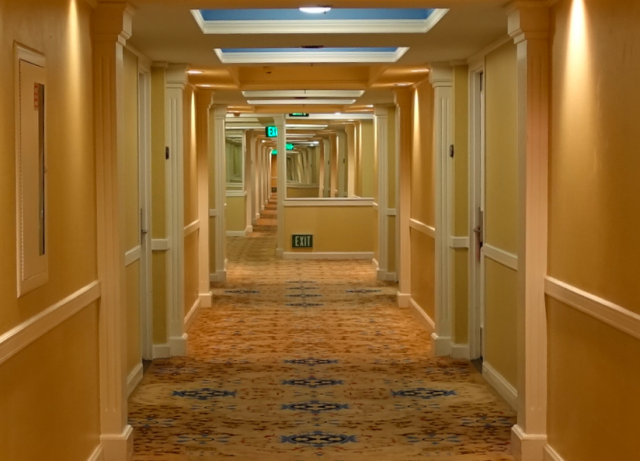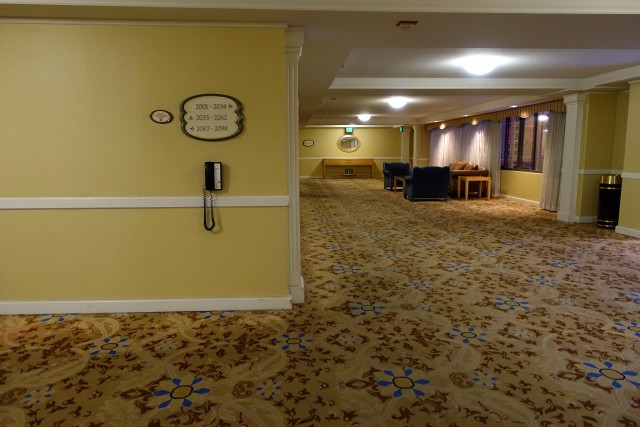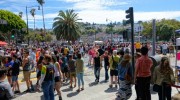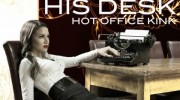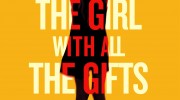This isn’t a sex related post, so feel free to skip this one and rest happy knowing we’ll be back to our irregularly scheduled sex culture fascinations after this post. (You can always enjoy my new cyberpunk erotica collection in the interim.)
While covering two information security conferences for work in Las Vegas last weekend, I stayed at Bally’s Hotel and Casino, which was the location of the second conference (DEF CON 23). I’m a massive horror film fan, and occasional film reviewer for various media outlets, so I know a lot of odd details about choices directors have made when making certain films. The Shining is one of my favorites, and I’ve studied it extensively. With that in mind, Bally’s, formerly the MGM Grand, is by far one of the creepiest hotels I’ve ever stayed in.
It’s important to note that everything in this post related to films is entirely coincidental.
On the second day of my stay, a fire alarm went off sometime before I awoke in the morning, it seemed to be outside and continued for over an hour until I left my room to get in a cab and go to work at Mandalay Bay, location of the Black Hat conference. I mentioned the alarm to the cab driver, and he remarked at what a traumatic noise that must have been for people at Bally’s. When I asked why, he told me about the 1980 fire in the casino, which spread to the hotel, killing 85 people and injuring over 700. You can read the fire investigation report here.
Most of the deaths, I discovered, occurred in the North — now Indigo — tower rooms, hallways, stairwells, floor lobbies, and elevators. I noticed that the Wikipedia article seems to deliberately skirt this fact. Only a few deaths occurred in the casino, and a few others died from jumping or falling. The fire started from faulty wiring in a kitchen socket, and estimates by the Clark County Fire Department clocked the speed of the fire’s spread through the casino at 15 to 19 feet per second. Because the fire started at around 7:00 am, most guests were in their rooms (the hotel was at 99% capacity). It was a tragedy that changed regulations around fire alarms and fire sprinklers.
I was already uncomfortable about the hotel, due to a nightmare about people — or rather, human mannequins in breathing masks — watching me from a square cut in the ceiling over my bed. But that cab ride was when I realized just how much the hotel reminded me of Stanley Kubrick’s film, The Shining. Please note that there’s no way the two could possibly be related; The Shining came out in May 1980, while the MGM’s (Bally’s) fire happened in November 1980.
The MGM Grand had originally opened on the Bally’s site in 1973, and for its 7-year run, was *the* place for Hollywood stars to stay, play (lotsa Rat Pack activity), perform, and film celebrity TV shows.
Interestingly, in The Shining as Mr. Ullman tours Jack and Wendy through the Overlook, he says,
Ullman: “This place has had an illustrious past. In it’s heyday it was one of the stopping places for the jet sets … even before anyone knew what a jet set was. We had four presidents who stayed here. Lotsa movie stars.”
Wendy: “Royalty?”
Ullman: “All the best people.”
1. South Tower (Jubilee Tower) hallway color palette
The South tower was under construction when the North’s tragedy occurred. Stepping out of my South Tower (Jubilee) room and looking down the hall was when I first remembered the color palette of The Shining. Not many people realize this, but there are two separate color themes in The Shining — and they’re both inside the hotel. The color theme we remember the most is in the parts of the hotel that are occupied by hotel guests who are still alive — namely, where Danny rides his bike.
The hallway outside my room in the South Tower:
An example of The Shining:
2. The elevator doors
This color match stood out after I noticed the parity in the hallway’s coffee brown, red, and orange palette. The elevator doors in the South Tower:
The elevator doors in The Shining:
3. They both have a Gold Room
The Gold Room is the Overlook hotel’s ballroom, appearing in the film a few times in different eras. Famously, it’s where Jack — after passing a hallway lined with four huge mirrors, each of which reflects Jack’s inner psychosis seen in his facial expressions — visits with ghost bartender Lloyd and Jack “falls off the wagon.” Jack sits at the bar facing yet another mirror, covers his eyes, Lloyd appears, and Jack has a drink. After his sip, Lloyd steps aside and Jack can no longer be seen in the mirror.
The hotel was full of DEF CON attendees so I only got this shot to show Bally’s Gold Room:
The Shining Gold Room:
4. North Tower (Indigo Tower) hallway color palette
At this point, I was wondering about the colors in the North Tower, and realized that it was the “Indigo” tower — so there was a good chance it would be in blue ranges. Which bugged me, because I knew that in The Shining, the color palette for areas in the hotel where people are murdered — the realm of the dead — was in blue and mustard yellow. While the Art Deco bathtub scene, the famous “Room 237” scene, is in greens, the rest of the murder scenes are in mustard/blue parts of the hotel. The hallway with the twins is mustard yellow with blue; the outside of the notorious “Here’s Johnny!” scene is mustard with blue (and so on).
The Twins:
North Tower color scheme, entrance to 20th floor lobby:
5. Use of mirrors and disorientation
I mentioned the mirrors in The Shining’s scene of Jack and the Gold Room. Stanley Kubrick’s use of mirrors in The Shining are widely written about, because they’re prevalent and symbolic throughout the film. The mirrors mostly reflect doors, and show characters when they’re struggling between, or succumbing to, the barriers between the living and the dead. Danny meets his “redrum” friend in a mirror; Jack’s demons reveal themselves in numerous mirrors throughout the film; we see “REDRUM” on a door in the mirror.
There’s much more with mirrors in the film, but you get the idea. Kubrick meant The Overlook to be spatially disorienting, and even physically impossible (an outside window in an inner office; stairs to nowhere, etc.), and the film’s mirrors are part of Kubrick’s intentional disorientation of the viewer.
Which is why, when out of curiosity I visited the North Tower and picked the 20th floor at random, I was a little freaked out to discover not only the color scheme, but that its guest room hallways are practically lined with mirrors (unlike any of the South Tower floors). Here, giant mirrors cover the walls, primarily reflecting doors.
But in many cases, they’re only reflecting each other — so walking down the halls, looking to left or right shows an infinity stretching and warping into a curved blackness you can’t see the end of.
Above: The round mirror is actually reflecting a full-wall mirror across from it, so the door you see on the left is actually also the door on the right.
Below: In some places, I stood in the reflection of three mirrors, and could not be seen. You can see the mirrors in front of me are reflecting the mirror behind me — but not me.
On the 20th floor, I also noticed that there appear to be room numbers missing.
I’m glad to have discovered later — and not when I was there — how many people died in the 20th floor hallways, several 20th floor rooms, its stairwell, and the 20th floor lobby. There’s a list (incomplete) of deaths and hotel areas here.
I uploaded all the full-size images from my 20th floor trip here if you want to see more photos and look closer.

